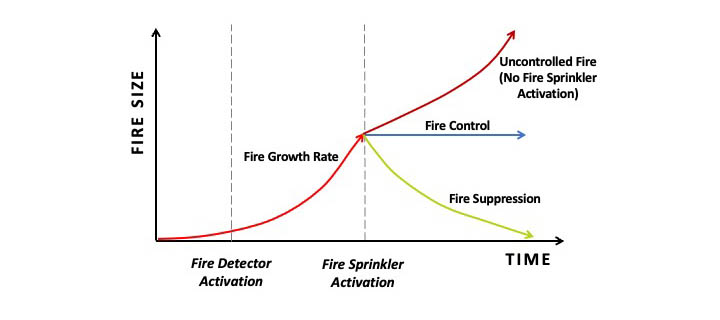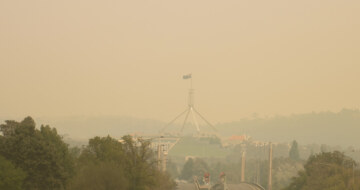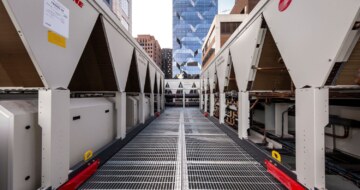
December 1, 2025 in Advisory Notes
Combating High Humidity in Commercial Buildings
High humidity is one of the more challenging and persistent issues facing commercial buildings today. Longer humid spells, warmer temperatures and mor...
June 26, 2023
.
An Automatic Fire Sprinkler System, that is correctly installed and maintained, is a highly effective safeguard against loss of life and property damage by fire. In most instances it can detect and control fire before hazardous heat, smoke and gas conditions are created.
Fire Protection Association (FPA) have published the following data.
Effectiveness of a fire sprinkler system:
Reliability of a well maintained and regularly inspected fire sprinkler system is considered upward of 95%
Common reasons for fire sprinkler failures are:
The Automatic Fire Sprinkler System is an engineered system designed to control a fire within minutes of it starting. The basis of the fire sprinkler design is to keep a fire a relatively small size and under control; not necessarily extinguish the fire. Although on many occasions fire has been extinguished (e.g. suppression) before fire brigade intervention. In the event a facility does not have a fire sprinkler system or failure of the facility’s fire sprinkler system can result in a fully developed fire (e.g. loss of control) and potentially catastrophic failure of the facility. The figure below illustrates the three fire scenarios clearly.

A simple test that is often overlooked is the 25-year Batch Test in accordance with Australian Standard AS/NZS 1851, where a sample of 14 fire sprinkler heads are removed from each control valve and tested in an authorised laboratory. Fire sprinklers in the batch that fail the test must be replaced. A batch ‘passes the test’ if the number of tested sprinklers meets the minimum requirement of the batch and all of the tested sprinklers still demonstrate that they meet their design specifications. This is a minimum frequency but can be increased if there is concern about sprinkler operation.
The Standard requires the removal and testing of a representative sample of sprinklers at the following intervals:
Fast Response Sprinklers (not less than 14 samples): At 25 years, then every ten years.
Dry Pendent Sprinklers (representative sample): At 25 years, then every ten years.
All other sprinklers (not less than 14 samples): At 25 years, then every ten years.
Subject the samples to the following test conducted by a registered laboratory:
For all the sprinklers above using ISO 6182- 12, ISO 6182-6 and ISO 6182-7 components standards, sample sprinklers should be selected from the range of site environmental conditions to which the system(s) is subjected to (i.e. office, factory, boiler house environments). Should one or more sprinkler fail any of the above tests, further sampling and testing should be conducted until the results can be concidered truly representative. The extent of sprinkler replacement, if any, will be dependent on the results of testing.
In addition, in line with Building Regulation occupied and unoccupied buildings that have a fire sprinkler system should be subject to regular inspections, maintenance, and testing to verify their operational readiness. These tests may include checking the water supply, inspecting the sprinkler heads, and conducting flow tests to ensure
an adequate water supply and pressure.
An Automatic Fire Sprinkler System may seem simple by nature, but the holistic fire safety strategy requires an understanding of the hazard / commodity stored within a facility (e.g. in particular in warehouses that have a High Hazard Sprinkler System Classification). Routine Site Design Verification Surveys to ensure no impedance to the fire sprinkler heads and the existing fire sprinkler system is compliant for the commodities currently being stored (e.g. the hazard classification has changed to the where the original system design and installation is no longer adequate to protect it).
Automatic Fire Sprinkler Systems may have similar characteristics, but changes in the occupancy, contents, storage arrangement and process can render a sprinkler system inadequate to protect the occupancy or structure. It is recommended that these inspections be carried out on an annual basis by a Registered Fire Protection Services or Fire Safety Engineer.
It is important to have a facility’s Automatic Fire Sprinkler System regularly inspected, maintained and tested by qualified fire protection services professionals to identify and address any issues promptly. Following building guidelines, adhering to maintenance schedules, good record keeping, and complying with relevant Australian Standards can help mitigate the risk of fire sprinkler system failures.
|
For more information on Automatic Fire Sprinkler Systems, contact: |
|
Marcus Royle, Leader (Fire) – A.G. Coombs Advisory P: +61 3 9248 2700 | E: mroyle@agcoombs.com.au |

December 1, 2025 in Advisory Notes
High humidity is one of the more challenging and persistent issues facing commercial buildings today. Longer humid spells, warmer temperatures and mor...

November 10, 2025 in Advisory Notes
Mandatory climate-related risk and opportunity reporting is a new Australian regulatory requirement for large companies to disclose how climate change...

October 8, 2025 in Advisory Notes
Electrification projects can be complex undertakings bringing together a range of technical elements along with planning, coordination and logistics c...

September 1, 2025 in Advisory Notes
Cyber security incidents reported against both government and private organisations continue to increase in both frequency and severity.